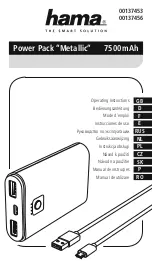
Installation Instructions for 81500
Vertical Sandblast Cabinet
11 CFM @ 80 PSI
Save This Manual
Keep this manual for the safety warnings and precautions, assembly, operating, inspection,
maintenance and cleaning procedures.
Keep this manual and the receipt in a safe and dry place for future reference.
When unpacking, make sure that the product is intact and undamaged. If any parts are missing or broken, please
contact us immediately.
WARNING!
Read this material before using this product. Failure to do so can result in serious injury. SAVE THIS MANUAL.
IMPORTANT SAFETY INSTRUCTIONS
INSTRUCTIONS PERTAINING TO A RISK OF FIRE, ELECTRIC SHOCK, OR INJURY TO PERSONS
WARNING
—
When using tools, basic precautions should always be followed, including the following.
General
To reduce the risks of electric shock, fire, and injury to persons, read all the instructions before using tool.
Work Area
1. Keep the work area clean and well lit. Cluttered benches and dark areas increase the risks of electric shock, fire,
and injury to persons.
2. Do not operate the tool in explosive atmospheres, such as in the presence of flammable liquids, gases, or dust. The
tool is able to create sparks resulting in the ignition of the dust or fumes.
3. Keep bystanders, children, and visitors away while operating the tool. Distractions could result in the loss of control
of the tool.
Personal Safety
1
Stay alert. Watch what you are doing and use common sense when operating the tool. Do not use the tool
while tired or under the influence of drugs, alcohol, or medication.
A moment of inattention while operating the tool
increases the risk of injury to persons.
2.
Dress properly. Do not wear loose clothing or jewelry. Contain long hair. Keep hair, clothing, and gloves
away from moving parts.
Loose clothes, jewelry, or long hair increases the risk of injury to persons as a result of
being caught in moving parts.
3.
Avoid unintentional starting. Be sure the trigger is released before connecting to the air supply.
Do not
connect the tool to the air supply with the switch on.
4.
Remove adjusting keys and wrenches before turning the tool on.
A wrench or a key that is left attached to a
rotating part of the tool increases the risk of personal injury
5.
Do not overreach. Keep proper footing and balance at all times.
Proper footing and balance enables better
control of the tool in unexpected situations.
6.
Use safety equipment.
A dust mask, non-skid safety shoes and a hard hat must be used for the applicable
conditions.
7.
Always wear eye protection.
Wear ANSI-approved safety goggles.
8.
Always wear hearing protection when using the tool.
Prolonged exposure to high intensity noise is able to cause
hearing loss.
Tool Use and Care
1.
Use clamps or another practical way to secure and support the workpiece to a stable platform.
Holding the
work by hand or against the body is unstable and is able to lead to loss of control.
2
Do not force the tool.
Use the correct tool for the application. The correct tool will do the job better and safer at the
rate for which the tool is designed.
3.
Do not use the tool if the switch does not turn the tool on or off.
Any tool that cannot be controlled with the
switch is dangerous and must be repaired.
4
Disconnect the tool from the air source before making any adjustments, changing accessories, or storing the
tool.
Such preventive safety measures reduce the risk of starting the tool unintentionally. Turn off and detach the air
supply, safely discharge any residual air pressure, and release the throttle and/or turn the switch to its off position
before leaving the work area
1-800-345-4545 jegs.com































